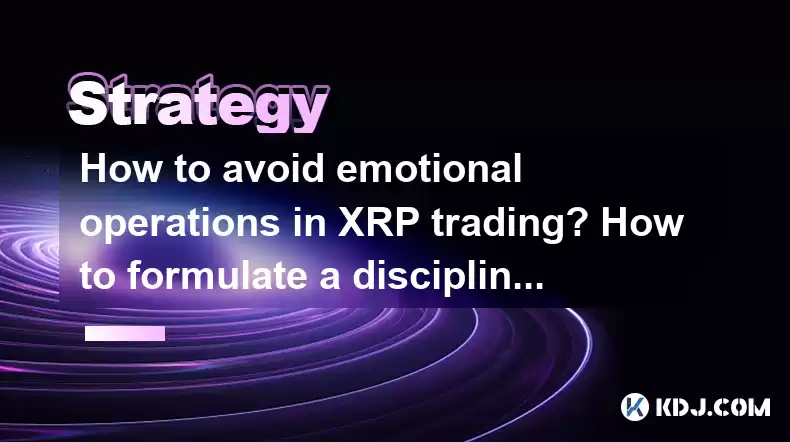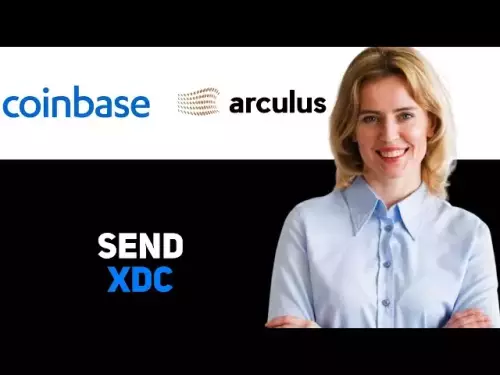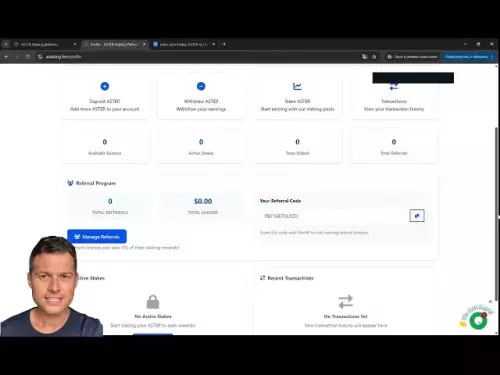-
 bitcoin
bitcoin $111375.742210 USD
-8.60% -
 ethereum
ethereum $3780.311592 USD
-13.98% -
 tether
tether $1.001299 USD
0.07% -
 bnb
bnb $1093.375857 USD
-13.01% -
 xrp
xrp $2.339375 USD
-16.91% -
 solana
solana $185.029017 USD
-16.69% -
 usd-coin
usd-coin $1.000230 USD
0.04% -
 tron
tron $0.319531 USD
-5.16% -
 dogecoin
dogecoin $0.190791 USD
-23.59% -
 cardano
cardano $0.638663 USD
-21.82% -
 ethena-usde
ethena-usde $0.998483 USD
-0.20% -
 hyperliquid
hyperliquid $37.741486 USD
-14.68% -
 chainlink
chainlink $17.229851 USD
-22.17% -
 stellar
stellar $0.316546 USD
-16.74% -
 bitcoin-cash
bitcoin-cash $507.861193 USD
-13.18%
How to avoid emotional operations in XRP trading? How to formulate a disciplined plan
To succeed in XRP trading, avoid emotional decisions by developing and sticking to a disciplined plan that includes clear goals, risk management, and regular performance reviews.
May 02, 2025 at 02:28 pm

Trading XRP, like any other cryptocurrency, can be an emotional rollercoaster. The volatile nature of the market can lead traders to make impulsive decisions based on fear, greed, or excitement. To succeed in XRP trading, it's crucial to avoid emotional operations and formulate a disciplined plan. This article will guide you through the steps to achieve this.
Understanding Emotional Trading
Emotional trading is a common pitfall for many traders, especially in the cryptocurrency market. Emotional trading occurs when decisions are driven by feelings rather than a well-thought-out strategy. Common emotions that influence trading include fear, greed, hope, and regret. For instance, a trader might sell XRP in a panic during a market dip or buy more in a frenzy during a surge, both of which can lead to suboptimal outcomes.
To avoid emotional trading, it's essential to recognize these emotions and understand how they can cloud judgment. Keeping a trading journal can help you track your emotional state and decision-making process, allowing you to identify patterns and improve over time.
Developing a Disciplined Trading Plan
A disciplined trading plan is the cornerstone of successful XRP trading. A trading plan outlines your strategy, risk management rules, and goals, helping you stay focused and consistent. Here are the key components of a disciplined trading plan:
- Define Your Goals: Clearly state what you want to achieve with your XRP trading. Are you looking for short-term gains or long-term investment? Your goals will shape your trading strategy.
- Set Risk Management Rules: Determine how much you are willing to risk on each trade. A common rule is to risk no more than 1-2% of your trading capital on a single trade.
- Choose Your Trading Strategy: Decide on the trading strategy that aligns with your goals and risk tolerance. This could be day trading, swing trading, or long-term holding.
- Establish Entry and Exit Points: Define the conditions under which you will enter and exit trades. This could be based on technical indicators, price levels, or market sentiment.
- Review and Adjust: Regularly review your trading plan and adjust it as needed based on your performance and market conditions.
Implementing Your Trading Plan
Once you have a trading plan, the next step is to implement it consistently. Implementing your trading plan requires discipline and adherence to the rules you've set. Here are some tips to help you stay on track:
- Use Trading Tools: Utilize trading platforms and tools that can help you execute your plan. Set up alerts for your entry and exit points, and use stop-loss orders to manage risk.
- Stick to Your Plan: Avoid the temptation to deviate from your plan based on short-term market movements. Trust in the strategy you've developed and stick to it.
- Keep Emotions in Check: When emotions start to influence your decisions, take a step back. Take a break from trading if necessary, and return when you can make rational decisions.
Managing Risk in XRP Trading
Risk management is a critical aspect of avoiding emotional trading and maintaining a disciplined approach. Managing risk involves setting clear rules for how much you are willing to lose on each trade and sticking to those rules. Here are some strategies for effective risk management:
- Set Stop-Loss Orders: A stop-loss order automatically sells your XRP if the price drops to a certain level, limiting your potential losses.
- Diversify Your Portfolio: Don't put all your eggs in one basket. Diversify your investments across different cryptocurrencies and asset classes to spread risk.
- Use Position Sizing: Determine the size of your positions based on your risk tolerance and the volatility of XRP. Smaller positions can help you manage risk more effectively.
Monitoring and Evaluating Your Performance
To maintain a disciplined approach to XRP trading, it's important to monitor and evaluate your performance regularly. This involves tracking your trades, analyzing your results, and making adjustments to your plan as needed. Here's how you can do this effectively:
- Keep a Trading Journal: Record every trade you make, including the entry and exit points, the reason for the trade, and the outcome. This will help you identify what works and what doesn't.
- Analyze Your Results: Regularly review your trading journal to analyze your performance. Look for patterns in your successful and unsuccessful trades, and use this information to refine your strategy.
- Adjust Your Plan: Based on your analysis, make adjustments to your trading plan. This could involve changing your entry and exit points, adjusting your risk management rules, or trying a different trading strategy.
Staying Informed and Educated
Staying informed about the XRP market and continuously educating yourself is crucial for maintaining a disciplined approach to trading. Staying informed involves keeping up with market news, understanding the factors that influence XRP's price, and learning from other traders. Here are some ways to stay informed and educated:
- Follow Market News: Stay updated with the latest news and developments in the cryptocurrency market. Websites, forums, and social media can be valuable sources of information.
- Learn from Others: Join trading communities and forums where you can learn from experienced traders. Attend webinars and workshops to expand your knowledge.
- Continuous Learning: The cryptocurrency market is constantly evolving, so it's important to keep learning. Read books, take courses, and stay curious about new trading strategies and techniques.
FAQs
Q: How can I prevent myself from making impulsive trades during high volatility in the XRP market?A: To prevent impulsive trades during high volatility, set clear rules in your trading plan and stick to them. Use stop-loss orders to manage risk, and take breaks from trading if you feel overwhelmed by emotions. Regularly reviewing your trading journal can also help you identify and correct impulsive behavior.
Q: What are some common emotional triggers in XRP trading, and how can I manage them?A: Common emotional triggers in XRP trading include fear of missing out (FOMO), fear of loss, and overconfidence. To manage these emotions, practice mindfulness and take breaks when needed. Set realistic expectations and remind yourself of your long-term goals. Keeping a trading journal can help you recognize and manage these triggers over time.
Q: How often should I review and adjust my trading plan for XRP?A: You should review your trading plan for XRP at least once a month, or more frequently if you notice significant changes in your performance or the market. Regular reviews help you stay disciplined and adapt to changing market conditions.
Q: Can using automated trading bots help me avoid emotional trading in XRP?A: Yes, using automated trading bots can help you avoid emotional trading by executing trades based on predefined rules and strategies. However, it's important to monitor and adjust the bots regularly to ensure they align with your overall trading plan and risk management rules.
Disclaimer:info@kdj.com
The information provided is not trading advice. kdj.com does not assume any responsibility for any investments made based on the information provided in this article. Cryptocurrencies are highly volatile and it is highly recommended that you invest with caution after thorough research!
If you believe that the content used on this website infringes your copyright, please contact us immediately (info@kdj.com) and we will delete it promptly.
- Bittensor (TAO): Super Bullish Signals Point to Potential 2x Rally
- 2025-10-11 10:25:12
- Silver Price Correction: Navigating the Dip & Identifying Key SEO Keywords
- 2025-10-11 10:25:12
- MoonBull: The Crypto Meme Coin Promising 1000x Gains?
- 2025-10-11 10:30:01
- Crypto Payroll Revolution: Stablecoins, Altcoins, and the Future of Salary Payments
- 2025-10-11 10:30:01
- Decoding Crypto Trends: XRP's Bitcoin Dream, BlockDAG's Rise, and the PayFi Revolution
- 2025-10-11 10:30:01
- Amina Bank & Polygon: Institutional Staking with a Sweet 15% Yield
- 2025-10-11 10:30:15
Related knowledge

Practical parameter settings for a Bitcoin multi-timeframe moving average system
Sep 18,2025 at 10:54pm
Optimizing Timeframe Combinations for Bitcoin Trading1. Selecting appropriate timeframes is crucial when building a multi-timeframe moving average sys...

How can I filter out false breakouts in Dogecoin high-frequency trading?
Sep 22,2025 at 01:00am
Understanding False Breakouts in Dogecoin Trading1. A false breakout occurs when Dogecoin's price appears to move beyond a defined support or resistan...

Techniques for identifying tops and bottoms in the Bitcoin on-chain NVT model
Sep 20,2025 at 07:54pm
Understanding the NVT Model in Bitcoin Analysis1. The Network Value to Transactions (NVT) ratio is often described as the 'P/E ratio' of the cryptocur...

What does the surge in open interest in Bitcoincoin futures mean?
Sep 20,2025 at 11:18pm
Understanding the Surge in Dogecoin Futures Open Interest1. A surge in open interest within Dogecoin futures indicates a growing number of active cont...

How can I use the Ethereum USDT premium to gauge market sentiment?
Sep 18,2025 at 11:55pm
Understanding the Ethereum USDT Premium1. The Ethereum USDT premium refers to the price difference between USDT (Tether) traded on Ethereum-based plat...

What should I do if Ethereum staking yields decline?
Sep 20,2025 at 06:18am
Understanding the Causes Behind Declining Ethereum Staking Yields1. The Ethereum network transitioned to a proof-of-stake consensus mechanism with the...

Practical parameter settings for a Bitcoin multi-timeframe moving average system
Sep 18,2025 at 10:54pm
Optimizing Timeframe Combinations for Bitcoin Trading1. Selecting appropriate timeframes is crucial when building a multi-timeframe moving average sys...

How can I filter out false breakouts in Dogecoin high-frequency trading?
Sep 22,2025 at 01:00am
Understanding False Breakouts in Dogecoin Trading1. A false breakout occurs when Dogecoin's price appears to move beyond a defined support or resistan...

Techniques for identifying tops and bottoms in the Bitcoin on-chain NVT model
Sep 20,2025 at 07:54pm
Understanding the NVT Model in Bitcoin Analysis1. The Network Value to Transactions (NVT) ratio is often described as the 'P/E ratio' of the cryptocur...

What does the surge in open interest in Bitcoincoin futures mean?
Sep 20,2025 at 11:18pm
Understanding the Surge in Dogecoin Futures Open Interest1. A surge in open interest within Dogecoin futures indicates a growing number of active cont...

How can I use the Ethereum USDT premium to gauge market sentiment?
Sep 18,2025 at 11:55pm
Understanding the Ethereum USDT Premium1. The Ethereum USDT premium refers to the price difference between USDT (Tether) traded on Ethereum-based plat...

What should I do if Ethereum staking yields decline?
Sep 20,2025 at 06:18am
Understanding the Causes Behind Declining Ethereum Staking Yields1. The Ethereum network transitioned to a proof-of-stake consensus mechanism with the...
See all articles










































































